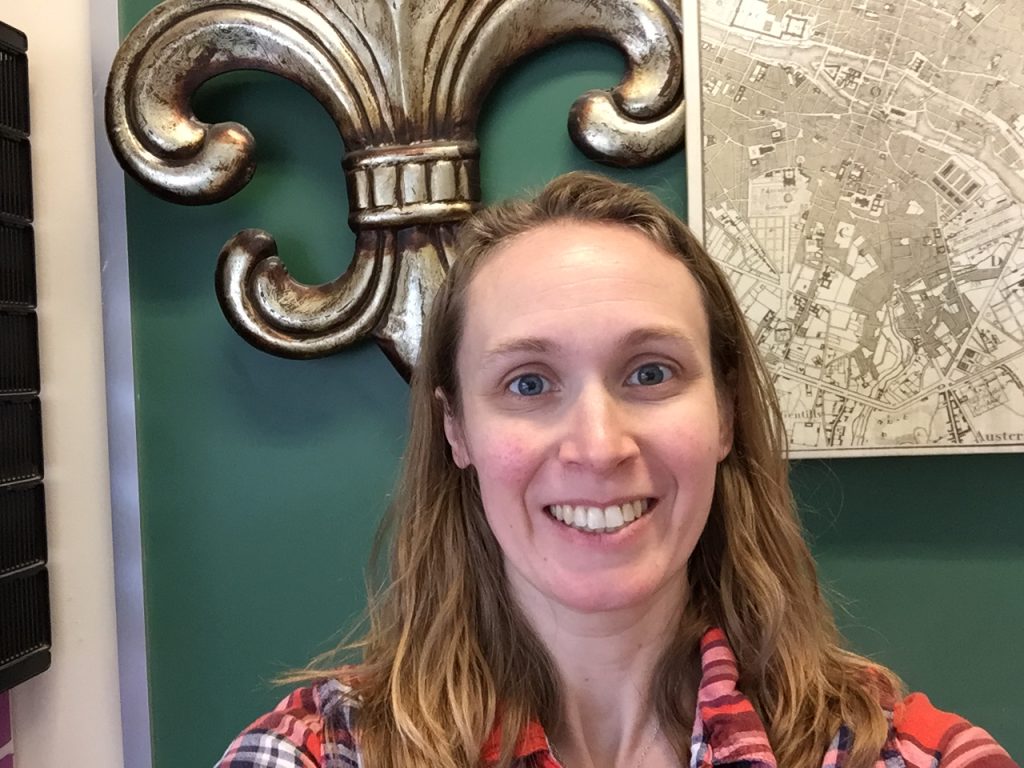- Begin the activity by opening the Google Slides presentation and reviewing the Can-do statements.
- Introduce the topic (les inventions et innovations) and show the picture of French inventions on the Google Slide to the class. Ask students to name the invention that they use the most in their daily lives. Quelle invention utilisez-vous le plus? They can compare their answers with their partners and elaborate on why or how often they use it. They will have 2 minutes to decide which partner’s invention to present to the large group. The teacher will keep a tally so that the class can vote on which invention is the most used.
💡 Les inventions et innovations / Inventions and innovations by Kylene Butler
Activity by Kylene Butler
Description: In this activity, students will read an article and create a visual representation of the differences between inventions and innovations. Then, they will choose between two emails to write: one to propose a solution to a global problem and the other to ask questions of a student inventor.
3 P’s (Products, Practices, Perspectives):
- Products: Inventions, innovations
- Practices: Part of interacting with new technologies involves understanding existing technologies. Considering improvements to existing technologies promotes innovative thinking.
- Perspectives: There are many important inventions and innovations that originated in Francophone countries.
Semantic Topics: Science, technology, inventions, innovations, global challenges, la science, la technologie, les inventions, les innovations, les défis mondiaux
World-Readiness Standards:
- Standard 1.1: Students engage in conversations, provide and obtain information, express feelings and emotions, and exchange opinions
- Standard 1.2: Students understand and interpret written and spoken French on a variety of topics
- Standard 1.3: Students present information, concepts, and ideas in French to an audience of listeners or readers on a variety of topics.
- Standard 3.1: Students reinforce and further their knowledge of other disciplines through French.
NCSSFL-ACTFL Can-Do Statements:
- I can understand the differences and similarities between inventions and innovations.
- I can exchange emails proposing technological solutions to problems or inquiring about new technologies.
Materials Needed:
- Google Slides Presentation
- Blog post from Hubspot (“Quelle est la différence entre invention et innovation ?”)
- Quelle est la différence entre invention et innovation? By Clara Landecy is included under fair use as described in the CBPFUOER.
- Email Option 1
- LES OBJECTIFS by The Global Goals is included under fair use as described in the CBPFUOER.
- Composition du Gouvernement is included under fair use as described in the CBPFUOER.
- Les meilleures formules de politesse pour les lettres de motivation et les mails by l’Etudiant is included under fair use as described in the CBPFUOER.
- Email Option 2
- Concours Lepine is included under fair use as described in the CBPFUOER.
- Rubric for Email
- Email Expressions
- Transition Words
- Pictures of French Inventions
- Les inventions françaises by Macarena del Barrio is included under fair use as described in the CBPFUOER.
Warm UP
Main Activity
- Ask students to read this blog post from Hubspot about the differences between inventions (les inventions) and innovations (les innovations).
- Ask students to create a visual representation (Venn diagram, illustration, etc.) of the similarities and differences between these two concepts. Some suggestions for online tools to support this are Canva.com and Google Drawings.
Presentational
Students can choose between the following two follow-up activities. They should incorporate the characteristics of inventions or innovations that they noted in their visuals.
- Explore this website (https://www.globalgoals.org/fr/) and imagine an invention or innovation that could solve this problem. Write an email to the appropriate French minister (https://www.gouvernement.fr/composition-du-gouvernement) suggesting that they follow your advice to help solve the problem.
- Read through the recent entries to this student invention competition (https://www.concours-lepine.com/). Write an email to the inventor and ask questions about their invention.
Note to instructor: if you haven’t already, you’ll want to review how to write an email in French. There are many websites that can help guide your students to practice this skill.
Wrap Up
Cultural Notes:
- http://bestinventionsidea.blogspot.com/2017/02/les-inventions-francaises.html?spref=pi
- https://blog.hubspot.fr/marketing/invention-innovation-difference
- https://www.globalgoals.org/fr/
- https://www.gouvernement.fr/composition-du-gouvernement
- https://www.concours-lepine.com/
- https://www.letudiant.fr/jobsstages/lettres-de-motivation_1/les-meilleures-formules-de-politesse-pour-les-lettres-de-motivation-et-les-mails.html
End of activity:
- Students will review the Can-do statements and will evaluate their performance.
NCSSFL-ACTFL Can-Do Statements:
- I can understand the differences and similarities between inventions and innovations.
- I can exchange emails proposing technological solutions to problems or inquiring about new technologies.


